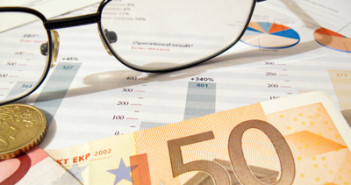EUR/USD is trading quietly on Friday. The pair continues to trade above the 1.36 line as the dollar remains under pressure. In economic news, US Services PMI was released on Thursday. The key index missed the estimate, dropping to a three-month low. Friday has a very light schedule, with no US economic data being released, as Non-Farm Payrolls has been postponed to an undetermined date. FOMC members Dudley and Stein will speak later in the day. In the Eurozone, German and Eurozone PPIs both missed their estimates. It’s Day 4 of the government shutdown, and there has been no progress towards reaching an agreement on Capitol Hill.
Here is a quick update on the technical situation, indicators, and market sentiment that moves euro/dollar.
EUR/USD Technical
- In the Asian session, EUR/USD was very quiet, trading close to the 1.3630 line. The pair is steady in the European session.
- Current range: 1.3570 to 1.3650.
Further levels in both directions:Â 
- Below: 1.3570, 1.3500, 1.3460, 1.3415, 1.3325, 1.3240, 1.3175, 1.31, 1.3050 and 1.3000.
- Above: 1.3650, 1.3710, 1.3800, 1.3870 and 1.3940.
- 1.3570 continues to provide support. 1.3500 follows.
- 1.3650 is a weak resistance line. 1.3710 is next.
EUR/USD Fundamentals
- 6:00 German PPI. Exp. 0.1%., Actual -0.1%.
- 9:00 Eurozone PPI. Exp. 0.1%, Actual 0.0%.
- 13:15 US FOMC Member William Dudley Speaks.
- 13:30 US FOMC Member Jeremy Stein Speaks.
* All times are GMT.
For more events and lines, see the Euro to dollar forecast.
EUR/USD Sentiment
- No progress as shutdown continues: With Congress locked in a partisan battle over the budget, the US government shutdown continues. Democrats and Republicans have dug their trenches, and each side is blaming the other for the impasse. Republicans want a commitment from the Democrats to delay Obamacare before passing a budget, while the Dems say that there can be no discussions on the heath care legislation before a budget is passed. With the government lacking funds to operate, it has been forced to close non-essential services across the country and send almost a million government workers home. Public resentment at the politicians is bound to increase, but so far no-one is Washington is budging.
- Debt Ceiling looms: The headlines and news programs are focused on the current shutdown, which has paralyzed the US government. However, a far more serious potential crisis is lying just around the corner – the debt ceiling. The US has a debt worth $16.7 trillion, and will run out of funds to service the debt by October 17, unless Congress authorizes raising the debt ceiling. Otherwise, the US could potentially default on its obligations, which could cause chaos in the domestic and international markets. There was some good news on Thursday, as House Speaker John Boehner (Republican) has apparently told his party that he would allow the Democrats to raise the debt limit. This would avoid another nasty fight in Congress, which is the last thing that the economy and the US dollar need right now.
- Draghi says rates to stay low: As expected, the ECB maintained its key interest rate at 0.50% earlier this week. There was more interest in the follow-up press conference, which continues to overshadow the interest rate announcement. At the press, conference, ECB President Draghi downplayed risks to the fragile Eurozone economy, and repeated that interest rates would remain at current or lower levels for an “extended period of time†given the low growth levels and weak inflation in the Eurozone. Friday’s PPI releases underscored the lack of inflation in the Eurozone, as German PPI declined by 0.1%, while Eurozone PPI dropped to a flat 0.0%. Both indexes fell short of their estimates.
- Italian government wins vote of confidence: There was some good news out of Italy on the political and economic fronts. Prime Minister Enrico Letta easily won a no-confidence vote in the Senate, after ex-PM Silvio Berlusconi supported the government, despite an earlier threat to vote against it. As well, Italian Services PMI barreled past the 50-point line for the first time in over two years. The index jumped from 48.8 points in August to 52.7 in September, easily surpassing the estimate of 49.2 points. A reading over 50 indicates expansion. Both events are bullish for the euro, which continues to hammer away at the US dollar.
- QE tapering unlikely in 2013: There was a lot of expectation that the Federal Reserve would taper QE in September, and most analysts were caught by surprise when the Fed opted not to reduce the bond-buying program. However, things have changed dramatically in the past few weeks, with the budget deadlock in Washington, which has shut down the government, as well as real fears about a debt ceiling crisis. Even if both of these issues are resolved tomorrow, the distortions and delays in key economic data will make it difficult for the Fed to have an accurate, up-to-date picture of the US economy. This will likely rule out any decision to taper QE in the next few months.



